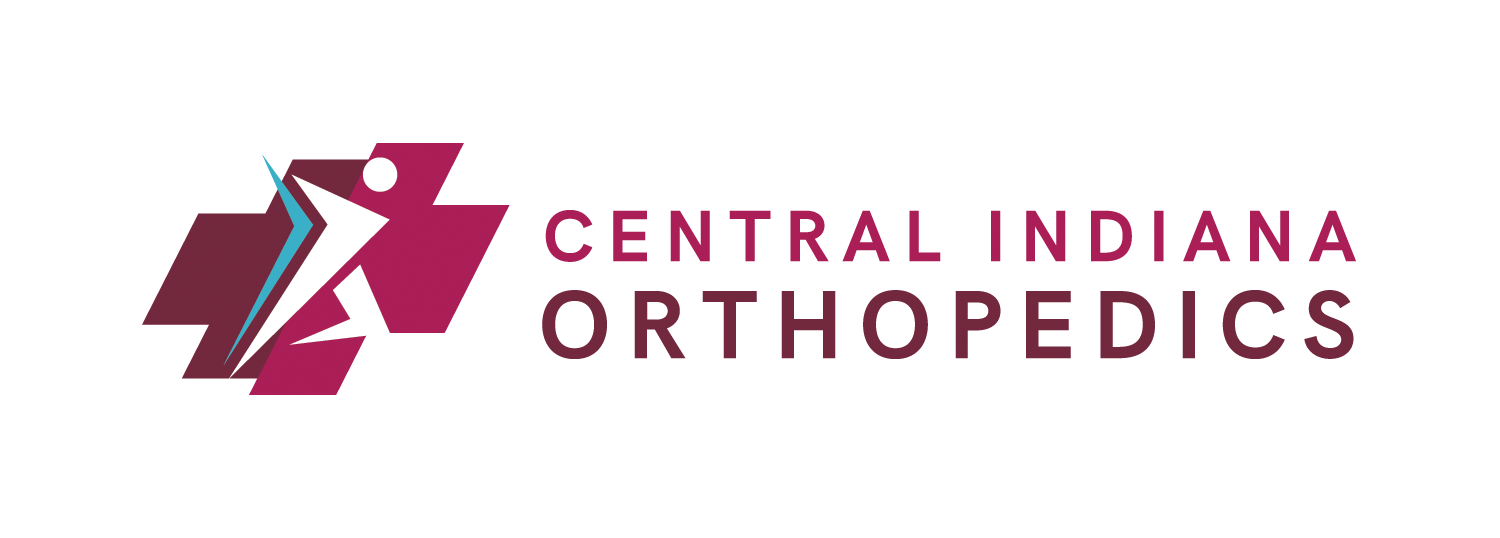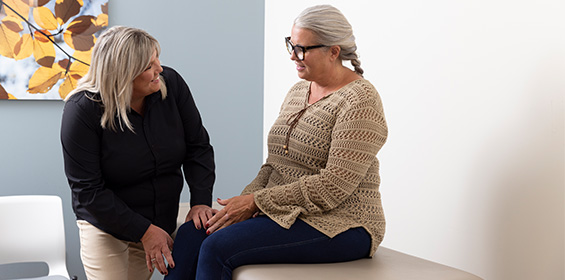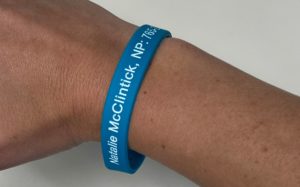Patient Safety Awareness Week serves as a dedicated time for growing awareness about patient safety and recognizing the work already being done in healthcare. At Central Indiana Orthopedics, we take patient safety seriously, and all staff members play an important role in keeping our patients safe. From keeping patient records confidential to maintaining a clean office, reviewing medical history and taking vitals to preparing for a procedure, every step of the patient’s journey includes aspects of patient safety.
A Patient Safety Advocate
For Nurse Practitioner and Patient Navigator Natalie McClintick, patient safety is an essential part of her role at Central Indiana Orthopedics. Natalie works one-on-one with CIO hip and knee replacement patients to educate them on how to remain safe at home during their recovery. “Patient safety starts when the patient determines a joint replacement is needed,” Natalie said. “Patients who have limited mobility due to pain experience difficulty navigating stairs and getting in and out of their bed or car. All of those factors are key to make the decision to have the joint replaced, so the patient can experience activities after surgery without the pain.” Natalie explained that often when a patient is having severe joint pain, going up and down stairs poses a safety issue before the joint is replaced. After surgery, patients experience less pain and improved mobility, which decreases their risk of falling or missing a step. “The benefits of having the surgery often outweigh the concerns and worries,” Natalie shared.
Pre-Surgery Safety Tips
Before surgery, Natalie sets patients up for success for how to recovery safely in their home, reducing their risk of complications. She provided the following examples:
- Place frequently used items at eye level to avoid bending down or reaching up.
- Prepare meals ahead of surgery to make it easy once you return home.
- Consider how you will safely transport food/drink from the kitchen to your eating space.
- Wear loose-fitting clothing that’s easy to take on/off after surgery.
- Be mindful of small pets, as they may be curious of unfamiliar objects, like a cane or walker, potentially creating a fall risk.
- Pick up potential tripping hazards, such as throw rugs or extension cords.
- Make sure your home layout is accessible for a walker, or think of creative ways to navigate from one room to the next.
- If you do not have a main floor bedroom, consider making a temporary sleeping arrangement on the first floor until you are safely able to navigate stairs.
With the opioid epidemic, it is very important to discuss how to remain safe when picking up narcotic medication at the pharmacy. People who are addicted to these medications will do anything to get them. When picking up narcotics, you must show your ID along with a possible discussion with the pharmacist, which lets everyone around you know that you’ve just received narcotic medication. Please be aware of your surroundings when walking to your vehicle and if at all possible, use the drive thru at the pharmacy to pick up these medications. Additionally, do not discuss with anyone what type of pain medications you have in your home and store them separately from the rest of your medications.
Post-Surgery Safety & Success
After surgery and before the patient is discharged from our care, CIO patients receive a wristband with Natalie’s name and contact information on it as a reminder that they can contact her 24/7 with any questions or concerns during recovery. “I enjoy being a valuable resource to our patients and can access the surgeon easily if there is something I’m worried about, or I feel the patient needs a little more guidance than what I’m comfortable providing,” Natalie said. “The wristband let patients know they are not out there alone and they don’t have to run to the ER if something happens – I’m just a phone call away.”
Natalie would rather patients call her if something is concerning them instead of worrying, especially if it’s causing them to be inactive. Getting back to doing normal activities, like walking, can be intimidating after surgery, so Natalie enjoys being their cheerleader, encouraging them to take one step at a time. “One of my patients was nervous to walk outside, but she wanted to take advantage of the beautiful weather,” Natalie said. “I asked her if she felt comfortable walking as long as I stayed on the phone with her.” The patient had a basket on her walker and put Natalie on speaker phone. With each step, the patient gained more courage and confidence to keep going as Natalie encouraged her along the way. Other patients have been hesitant to shower without anyone else at their home. Natalie has sat outside the bathroom door just to give patients peace of mind that she’s there in case anything was to happen or they needed help.
The last thing Natalie wants is for a patient to remain sedentary during the recovery process, unless there is a medical reason why they should. “Before surgery, their pain was stopping them from doing things they love, and they made the decision to have the surgery so they could have a better quality of life,” Natalie said. “Having the surgery to become pain free and independent is very important for people to be able to get back to daily activities, like grocery shopping and attending events that they’ve missed due to fear of pain or limited mobility. Seeing patients get back to doing what they love is very exciting to see.”
Consider Your Next Step to Better Quality of Life
Natalie encourages those who are experiencing joint pain that’s affecting their quality of life to not delay scheduling an appointment. Discussing goals and concerns with your doctor will help determine if conservative treatment options, or surgery, is best. If you are interested in meeting with a CIO joint replacement surgeon and learning more, visit ciocenter.com or call 800-622-6575 to schedule an appointment.


